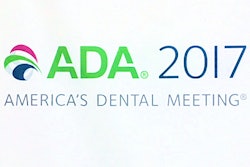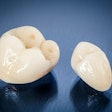
ATLANTA - When you are considering whether to remove carious tissue in your pediatric patients, evidence-based research suggests that you should make your clinical decision based on hardness and not on a tooth's discoloration, according to a presentation at the 2017 ADA annual meeting.
"The indication for caries removal is softness of the dentin," Margherita Fontana, DDS, PhD, told attendees. "But when it comes to noncavitated lesions, we should not be removing anything."
Dr. Fontana is a professor in the department of cariology, restorative sciences, and endodontics at the University of Michigan School of Dentistry in Ann Arbor.
Guiding principles
Evidence-based research suggests that certain guiding principles should be followed when a dentist decides carious tissue needs to be removed, according to Dr. Fontana.
 Margherita Fontana, DDS, PhD.
Margherita Fontana, DDS, PhD."We're talking about managing a disease process," she said. "Individualized decisions at the tooth level are necessary."
The first principle is to preserve nondemineralized and remineralizable tissue. This is followed by seeking to "achieve an adequate seal" by placing the peripheral restoration onto sound dentine or enamel. This sealing both controls the lesion and inactivates the remaining bacteria, Dr. Fontana noted.
Avoiding discomfort and pain for the patient and trying to help control the patient's dental anxiety also are crucial. These influence how care is carried out as well as outcomes.
"Methods that are less likely to lead to dental anxiety are preferable," she said.
In addition, maintaining pulpal health by preserving residual dentine and preventing as much pulp exposure as possible are important.
But how do you know when dentin is considered "soft" or "leathery"? Dr. Fontana presented the following definitions used for the clinical presentation of dentin in the literature:
- The dentin is considered soft if it is easily scooped with a hand instrument.
- The dentin is considered leathery if it does not deform when an instrument is pressed onto it, but it can still be lifted up with minimal force.
- The dentin is considered firm when it is physically resistant to hand excavation (meaning it requires some pressure to lift it).
- The dentin is considered hard when only a sharp cutting edge or bur can lift it. A scratchy sound can be heard when a probe is taken across it.
If you decide to remove carious tissue, what method should you use? There is not enough evidence to exclusively recommend one method of removal, but hand or chemomechanical removal might reduce pain and discomfort, which could positively affect dental anxiety, especially in children, according to Dr. Fontana.
Biofilm management
Dr. Fontana also noted that managing biofilms is key.
"The only reason to remove caries tissue is because we can't manage the biofilms," she said.
Using that principle, how should practitioners treat different lesions? Dr. Fontana offered the following guide:
- If it is a noncavitated lesion, evidence suggests not removing or restoring the tissue but rather sealing it.
- If it is a shallow or moderately deep cavitated lesion, remove the lesion down to firm dentin.
- If the patient has a deep cavitated lesion (defined as pulpal third/quarter of dentin), the evidence suggests removing to soft dentin (primary or permanent).
Dr. Fontana also touched on the topics of sealants and 38% silver diamine fluoride (SDF). Sealants reduce bacteria significantly but not entirely, she noted.
"What bacteria remains has no clinical relevance," she said.
School-based sealant programs can be effective, "as long as the sealant remains in place," she said.
As for SDF, the published data are from using the product to cover holes, according to Dr. Fontana.
"About 81% of the lesions are going to arrest," she said. "In about two weeks, [the lesions] will turn black and hard."
Reapplication every six months or yearly leads to better results, she noted.
Dr. Fontana concluded her presentation by reminding the audience that, while removing the tissue works well, working with patients to change their oral healthcare routine and diet is still crucial.
"These are still high-risk patients, and you need to teach them to brush and change their diet," she said.



















